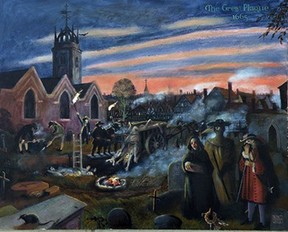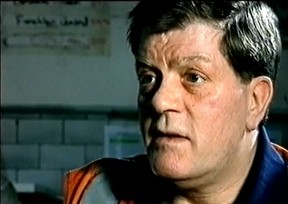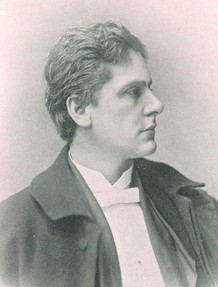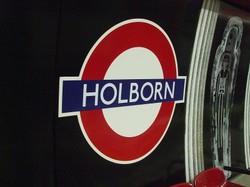 When it comes to London history, the Anglican Church of St Mary of Woolnoth is like a time capsule all of its own.
When it comes to London history, the Anglican Church of St Mary of Woolnoth is like a time capsule all of its own.
The present building was constructed in 1711. It replaced another, which had been patched up by Sir Christopher Wren, after it was almost completely destroyed in the great fire of London. That church in its time had replaced an earlier Norman church.
Archaeological records show that even before those three brick churches, there had been a wooden Saxon one. It had been built on the site of a Roman temple. Celtic Pagan artifacts have also been found here.
This all suggests that, as a place of religious worship, this spot has been active for over 2000 years. Each of its six incarnations has seen the dead buried or cremated within its precincts.
In 1665, when the Black Death killed Londoners by the tens of thousands, it became impossible to inter them fast enough. Plague pits were dug on consecrated ground. They facilitated mass burials, then were shoveled over and forgotten.
Until, of course, construction began on the London Underground. Workers encountered one such pit, as they sought to remove the bodies from the crypt under St Mary of Woolnoth.
The church had been destined to be leveled, in order to build Bank Station. Planning permission had been sought and awarded to do just that. But public outcry stopped them in their tracks.
A compromise was sought. The church would remain, but the station would burrow beneath it. It would slice through those Celtic, Roman, Saxon and Norman foundations; and the bodies would have to go.
Once they uncovered the plague pit, the whole endeavor should have been cancelled. That's what had happened up Muswell Hill. Such graves were too dangerous to be disturbed. It could release the Black Death on Victorian London with catastrophic results.
But this was Bank Station, so-named because it served the Bank of England. City boys were used to getting their own way and the corporations wanted the convenience of this station. The dead were relocated to a cemetery in Ilford and construction went ahead. It seemed that disaster had been averted.
They hadn't accounted for the spirits of the deceased themselves. From its earliest days, Bank Station has attracted an infrequent smell. No-one can locate the source and it is not always there. It has the stench of putrification.
In addition, there is the clairsentience of the place. Many a psychic has refused to venture down there. Many an ordinary Underground worker or Tube passenger has suddenly been overcome by feelings of utter grief and despair.
No-one has actually ever seen the plague victims, but there is a tacit understanding that they are haunting the platforms.
They aren't alone.
Clearly seen by many witnesses is the ghost of Sarah Whitehead there. Dressed in mourning clothes dating from 1811, she wanders through the corridors of Bank Station sobbing for her executed brother. Philip Whitehead was hanged for forgery; a crime committed while working as a clerk for the Bank of England.



 Billy McKeown is a patrolman on the London Underground. At night, when all the trains have parked up and the stations grown silent, it is his job to walk the tracks.
Billy McKeown is a patrolman on the London Underground. At night, when all the trains have parked up and the stations grown silent, it is his job to walk the tracks. 



 On December 16th 1897, William Terriss (pictured left) was stabbed to death outside the Adelphi Theatre in London.
On December 16th 1897, William Terriss (pictured left) was stabbed to death outside the Adelphi Theatre in London.


 During Christmas week 1955, Jack Hayden was the station foreman. At half past midnight, he was filling in a log book in the staff mess room, when the door rattled.
During Christmas week 1955, Jack Hayden was the station foreman. At half past midnight, he was filling in a log book in the staff mess room, when the door rattled.


 When it comes to London history, the Anglican Church of St Mary of Woolnoth is like a time capsule all of its own.
When it comes to London history, the Anglican Church of St Mary of Woolnoth is like a time capsule all of its own.








 St Tydecho's Churches in West Waleson 09/03/2014
St Tydecho's Churches in West Waleson 09/03/2014
 Goodies for an Outlander Premiere Partyon 03/06/2015
Goodies for an Outlander Premiere Partyon 03/06/2015
 Holocaust Memorial Day Interview with Rainer Höss, Grandson of Rudolf Architect of Auschwitzon 01/24/2015
Holocaust Memorial Day Interview with Rainer Höss, Grandson of Rudolf Architect of Auschwitzon 01/24/2015
 Romantic Valentine Gifts for an Outlander Fanon 01/16/2015
Romantic Valentine Gifts for an Outlander Fanon 01/16/2015



Comments
That's funny! Kathleen Duffy and I were saying yesterday that the footsteps one was the most creepy. I think it's because your imagination has to fit so much of the pieces together, plus he was in no position to run away.
Scary! The footprints one is going to give me nightmares!
Nor me either! That one had me with the hairs up all over my arms!
Yep. That did it for me. Remind me never to take that job!
Thank you very much, Jasmine! Was it the footprints one that raised the goosebumps on your arms? It certainly made me stare long and hard into space.
Awesome wizz! I love reading about haunted places :) You certainly have a way of writing to get people interested in reading more. Well done!